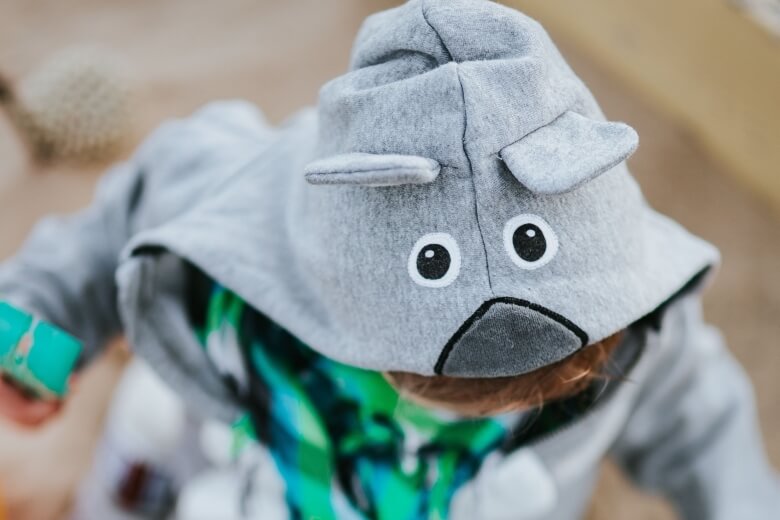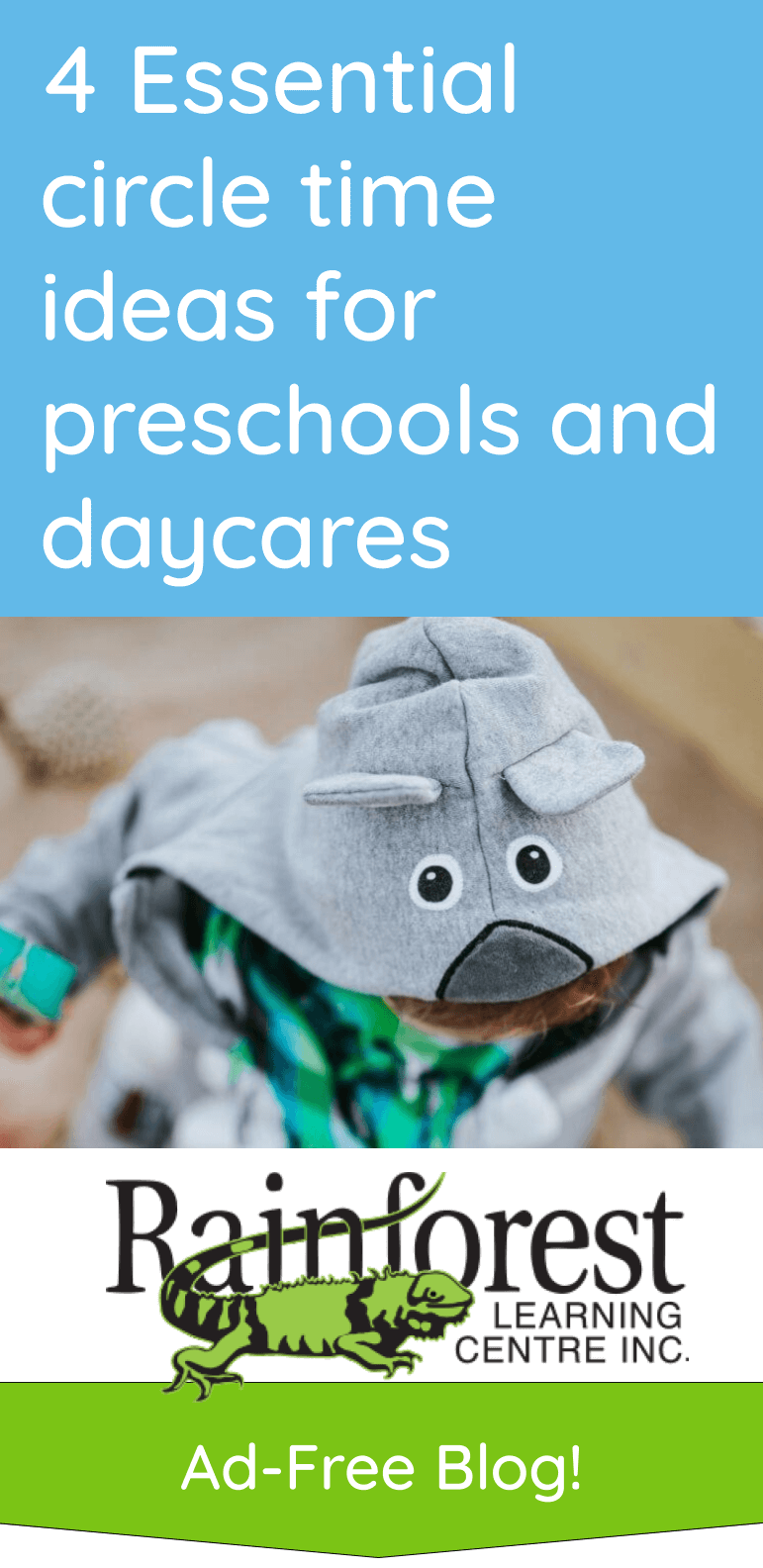
Circle time or carpet time at preschool or daycare is an essential part of any classroom. The routine helps ‘calibrate’ the toddlers for the day, and brings them together for social interaction in a group setting. While there are ‘tricks of the trade’ to keeping the kiddos’ attention, and helping them sit still, it all comes down to content. What should you do during circle time? How do you keep things entertaining? What are some ways to ‘spice things up’ during this time when all the kids come together with their early childhood educator?
Below, we’ll give 4 circle time ideas for preschools and daycares to try!
1) Sing a song with actions and gameplay
If you have a song with clapping, head turning, and actions that kids can follow, this can be a great way to get them started with circle time. The song can also be a queue to get them to leave their play stations and start to gather around at the carpet.
A song like, “head and shoulders, knees and toes” can be much more entertaining than simply a song without actions. This gets the kids interested in the ‘game’ that is played during the song. They practice gross and fine motor skills. Plus, it’s fun!
Here is a ‘clap your hands’ song on YouTube you can also try:
https://www.youtube.com/watch?v=cdvDMpIUMpo
And of course, there is also the ever-popular, ‘baby shark’!
https://www.youtube.com/watch?v=XqZsoesa55w (it’s so irresistible!)
Or, you can use a song with props, like this one where the ‘monkeys’ fall off the laminated photos of a bed:
https://www.youtube.com/watch?v=PPrHAp0XSns
2) Review the calendar, weather and week’s agenda, using interactive props
There’s no better way to teach kids about the days of the week, or months of the year, than to show them how their own life fits into it all. Circle time can be used to give children a sense of time, and organization, by going over a calendar or week’s agenda. This shouldn’t be entirely imaginary though. Use some sort of laminated poster with dry-erase markers to demonstrate and visualize the calendar, physically.
Here, it’s important that you’re not the only one talking and writing on this calendar. To keep kids engaged, let them take turns marking the calendar, or recording events on the calendar – especially if they are upcoming.
For example, one child can draw a cloud if the weather is cloudy on a certain day. You can use this to learn about weather.
Another child can mark an ‘X’ over yesterday’s ‘box’ to show that the day has passed, and to visualize where we are in the calendar month or week.
And, if someone’s birthday is coming up, a birthday cake magnet or sticker can be posted on that day’s ‘box.’ The birthday kid can put their name next to it. And the whole class can look forward to that event. They can learn to count by numbering the days until the birthday (or holiday, or field trip, etc.). Let the kids have a conversation about it too – how do they want to celebrate? What will they eat on that day? How can they make the birthday boy or girl feel special?
If there is a lesson plan for the week, the teacher can use images or crafty ideas on the calendar chart to show what’s coming for the classroom agenda. This can help prepare the kids, mentally, for what they’ll be learning about. At the end of the month, they can see a link between the subjects that they’ve covered, by reviewing the calendar.
3) Give a short, thematic lesson, using props during circle time
We’re mentioning props again. This is because, whatever you do, remember that you talking alone is not likely to hold the attention of preschoolers and toddlers! When it comes to giving the day’s lesson, always have an object in your hand to catch their eye, or hand out something the kids can touch and use. The idea is to keep their minds occupied by having them be active participants in circle time.
For example, if the day or week is going to be about bugs, have a magnifying glass ready for the kids. They can take turns looking at a ‘blown up’ view of a live bug, or a fake plastic bug, to see its details.
If you are covering a letter in the alphabet, use a letter ‘treasure box’ to open up and see all the objects that start with that letter. Ask the kids to name each one. Or, the kids can take turns picking an object out of the box and showing it to the group.
Puppets, felt boards, and ‘touch and feel’ objects are also helpful.
Overall, remember to keep the carpet time lesson short, too! At this age, the preschool kids can only handle about 10 – 20 minutes (and 20 minutes can be stretching it for some kids). To reinforce the carpet time lessons, play activities during the day that relate to the subject. This can be at their sensory stations, doing a related craft, or by going outside or on a field trip, and so on.
4) Read stories for a quiet, carpet time activity
Of course, no carpet time is complete without, at least, an attempted storybook reading! For sure, this should be a story with pictures you can show the kids, and one in a larger format too.
At each page, be sure to pause and show the kids the drawings or photos in the book. Talk about what is happening the book, to reinforce the idea of reading comprehension. Discuss letters and words the kids can recognize too, as a literacy activity.
In this way, your book becomes the ever-important ‘prop’ we keep mentioning.
Now, kids may start talking, looking around the room, or wiggling around. That’s ok. You can try a few “shhhh” gestures, or ask the children to pay attention. But at a certain point, if they’re not ‘buying’ what you have to ‘sell,’ it’s not a big deal. You can cut this circle time idea short.
But, that doesn’t mean you shouldn’t keep trying! The next day, ask the kids what story they’d like to hear (presuming they’re familiar with the books in the classroom). If it’s the same as yesterday (because one of the characters is just so funny), then go with it! The point here, in large part, is to get children excited about reading as an activity in itself. And, to settle things down for a bit of quiet time.
Or, maybe take a trip to the library, so the kids can initiate the book they want to read, check it out, and bring it back to the classroom for story time.
Somehow, try to get the kids to take ownership of story time, to keep them engaged.
See related: 4 Benefits of kids telling their own stories
Circle time ideas in preschool and daycare can be simple, but varied!
As seen above, gathering the preschool classroom can be quite effective with a few, essential circle time ideas. Singing a song, reading a book, going over a calendar or giving a short lesson can be a simple way to instil routine and social skills into the young children. And, variation can come naturally, without having to change the whole routine. For example, try a new song each week. Or, if the kids are not paying attention, try a new way of giving a lesson, or, see what the kids want to do. Remember, either way, this time is meant to be short, and age-appropriate for the little ones, who won’t have a long attention span. They’ll get it eventually!
See more on our blog:
- 5 Preschool guest instructors to invite to your early childhood classroom
- Teaching useful calendar concepts in preschool and daycare
- The benefits of Emergent Curriculum in preschool
- The benefits of dancing at daycare and preschool
- What is social competence in the early years?
- What are age-appropriate manners for preschoolers in early childhood?
